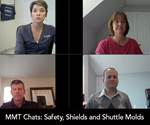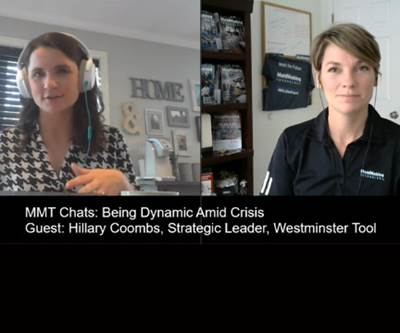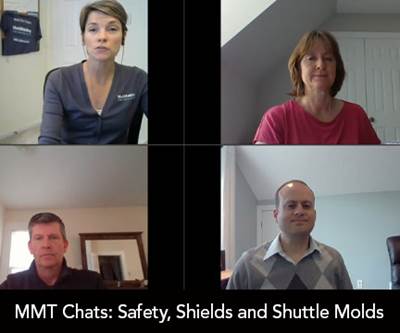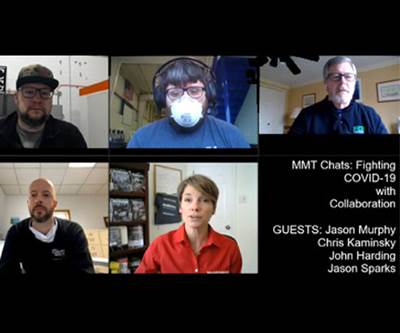5 Steps Manufacturers Should Take to Optimize Operations in the COVID-19 Era
Here are five steps all manufacturers can take to prepare for operations in the COVID-19 era and beyond.
The COVID-19 global pandemic has led to monumental shifts in manufacturing. Changing consumer trends, safety circumstances, and laws around the world have forced manufacturers to adapt. Here to help, our manufacturing experts have put together this informative guide on five steps all manufacturers should take to prepare for operations in the COVID-19 era and beyond.
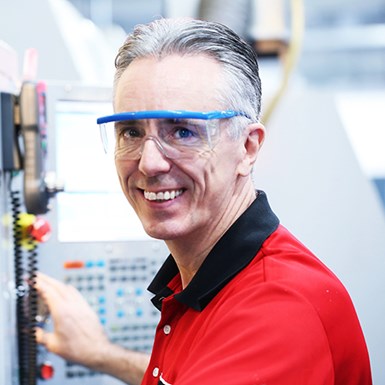
1. Safety First
Though COVID-19 case numbers are changing by the day, the outbreak is still very much a presence in communities around the world. For this reason, COVID-19 safety should still be the number one priority for manufacturers in all industries. Here are a few tips for keeping your facilities COVID-19-free.
- Require all employees to wear PPE and practice social distancing. All employees should stay 6 feet apart at all times. Those in relatively close quarters should also wear masks. Face shields, gowns, and feet coverings are not necessary, though gloves are a good idea for employees who may be operating the same machines as others.
- Identify high-risk employees and send them home. The larger your manufacturing facility is, the more likely it will be that one of your employees has come into contact with COVID-19. Stay vigilant and monitor your employees for early COVID-19 symptoms, such as coughs, congestions, headaches, and sore throats. Don’t hesitate to send employees home. One or two dismissed workers is better than half the staff becoming infected in a few short days.
- Sanitize your surroundings. If COVID-19 does enter your premises, you want to stamp it out as quickly as possible to stop it from spreading. Invest in a healthy amount of antibacterial cleaners and sprays, and make sure your most-trafficked areas are routinely disinfected. This is especially important for pieces of equipment that are used by multiple employees. We recommend disinfecting those several times a day.
2. Prioritize Your Personnel
Equipment is essential, but people are what keep your business going. No matter what the headlines read, you need to make sure your employees are not only safe but motivated to work. Here are a few things you can try to raise morale:
- Communicate. With new information entering into the media cycle every day, and changes in community laws and guidelines occurring nearly as often, your employees likely have questions and concerns about the pandemic. This includes how the pandemic relates to their workplace. Keep everyone in the loop by communicating as much as people. Address employee concerns whenever they arise (ideally before), and always be transparent when it comes to your company’s policies and steps to fight COVID-19.
- Prioritize mental health. In a pandemic, it can be easy to forget about mental health when physical health takes center stage. The fact is that COVID-19 is scary and anxiety-inducing for many people. Your employees may have doubts or inhibitions about coming back to work. They may have added stresses outside of the workplace that affects their performance. Address these issues by setting up avenues for your employees to better their mental health—schedule extra one-on-ones between employees and supervisors. Invest in company-covered counseling. Your employees may not come forward, and thank you, but they will appreciate the support.
- Balance confidence with understanding. One of the best ways to boost morale among your employees is to express excitement about your company itself. Showcase new initiatives, host energetic all-hands meetings and give credit where credit is due. This will help right the ship as it begins to sail into a new post-COVID-19 era. At the same time, be sensitive to your employees’ unique needs. Be understanding of those who aren’t ready to return to work, and be adaptable to set up schedules and contingencies that work for everyone.
3. Exercise Foresight
If you haven’t gotten the memo yet, one of the most significant factors in the COVID-19 era is change. Outbreak numbers change every day. Regulations tighten and relax. States and cities close down, reopen and threaten to close down again. With these changes, demand shifts. The mark of a successful manufacturer is if they can see what’s on the horizon.
We’re not asking you to be a fortune teller—no one has all of the answers on how COVID-19 will play out. Instead, we encourage you to look at current trends in your own business and your industry as a whole. These can help you make smart decisions about where to allocate your resources.
If you anticipate a widespread slowdown, pause as many new acquisitions (hires, equipment purchases, etc.) as possible, and start saving revenue to help you get through the slow period. However, if your manufacturing business offers a wide range of services, you may find a few in-demand jobs among even the most widespread slowdowns. Check consumer trends to see who’s still spending and what they’re buying. Personal protective equipment (PPE) has been in high demand throughout the COVID-19 crisis. For those with the means, work-from-home products, toys, games, and pet supplies are all also hot-sellers in the COVID-19 era. Pivoting your manufacturing to address a niche in one of these markets can help you stay afloat and come back swinging in the new post-COVID-19 era.
4. Advertise and Network
Expanding on the foresight recommendation above, it’s essential to keep eyes and ears on your company so you can make moves for the future. Want to manufacture in-demand items? You need clients willing to place an order. Start making calls, sending emails, and doing whatever you can to pursue leads. Likewise, make sure that the general public is aware of your company’s position. If you’re open for business, people need to know. Invest a bit of your safety fund in PR and marketing to attract new leads (and potentially new talent) when they matter most. This tactic is especially crucial as COVID-19 restrictions begin to lift. Clients new and old will be looking for manufacturing options, and your company needs to be ready.
5. Have a Plan B (and Plan C)
Though experts have educated guesses, there’s no telling what will happen next with COVID-19. In the United States alone, different state regulations have led to widely different outbreak numbers and reopening timelines. Other issues, such as natural disasters and nationwide protests, can further delay reopening. Likewise, widespread shifts to working from home have helped many people hold onto their jobs and resume spending. COVID-19 may be on its way out, or it may come back with full force. Regardless of what happens, you need a plan. We suggest having several. Do research, come up with the two or three most likely outcomes as they pertain to your industry, and plan accordingly. This will require you to be agile and shift priorities quickly if needed. In the end, it’s this agility and preparedness that can make or break your business.
Gordon Styles is a British engineer and entrepreneur. He is the founder and President of Star Rapid Manufacturing Co., Ltd.
Related Content
Making Quick and Easy Kaizen Work for Your Shop
Within each person is unlimited creative potential to improve shop operations.
Read MoreMachine Hammer Peening Automates Mold Polishing
A polishing automation solution eliminates hand work, accelerates milling operations and controls surface geometries.
Read MoreMMT Chats: The Connection Between Additive Manufacturing Education and ROI
This MMT Chat continues the conversation with Action Mold and Machining, as two members of the Additive Manufacturing team dig a little deeper into AM education, AM’s return on investment and the facility and equipment requirements to implement AM properly.
Read MoreHow to Use Scientific Maintenance for More Accurate Mold and Part Troubleshooting
Discover how adopting scientific maintenance approaches helps improve mold lifespan, minimize failures, and optimize production outcomes.
Read MoreRead Next
MMT Chats: Being Dynamic Amid Crisis
Westminster Tool in Plainfield, Connecticut, stresses the importance of understanding and embracing change, and leadership and communication during a crisis.
Read MoreMMT Chat: Safety, Shields and Shuttle Molds
The team from Canon Virginia talks about business during COVID-19, its efforts to help the fight and recent advancements to its Shuttle Mold System.
Read MoreMMT Chats: Fighting COVID-19 with Collaboration
Next Chapter Manufacturing, Muskegon Community College, PCS Company and Concept Molds chat about a coalition they formed to produce face shields to help fight COVID-19.
Read More

